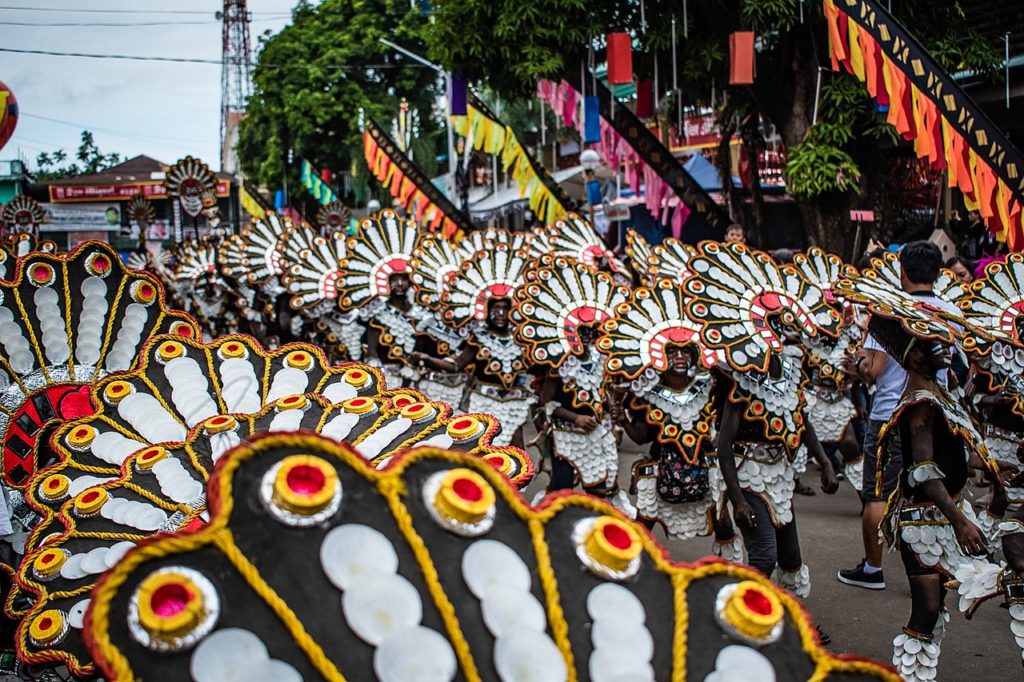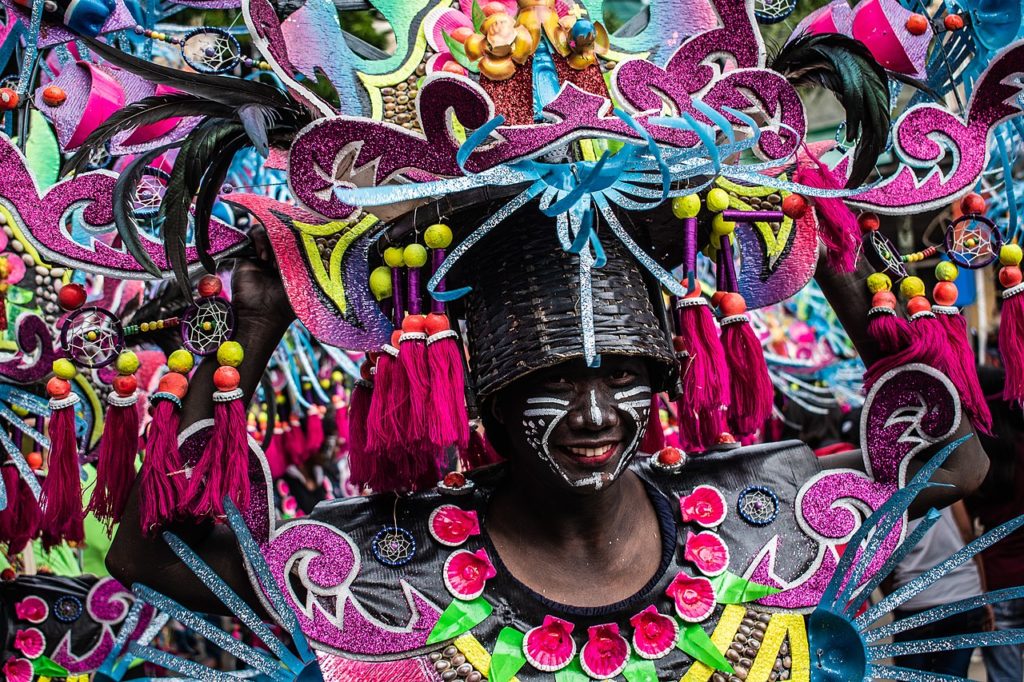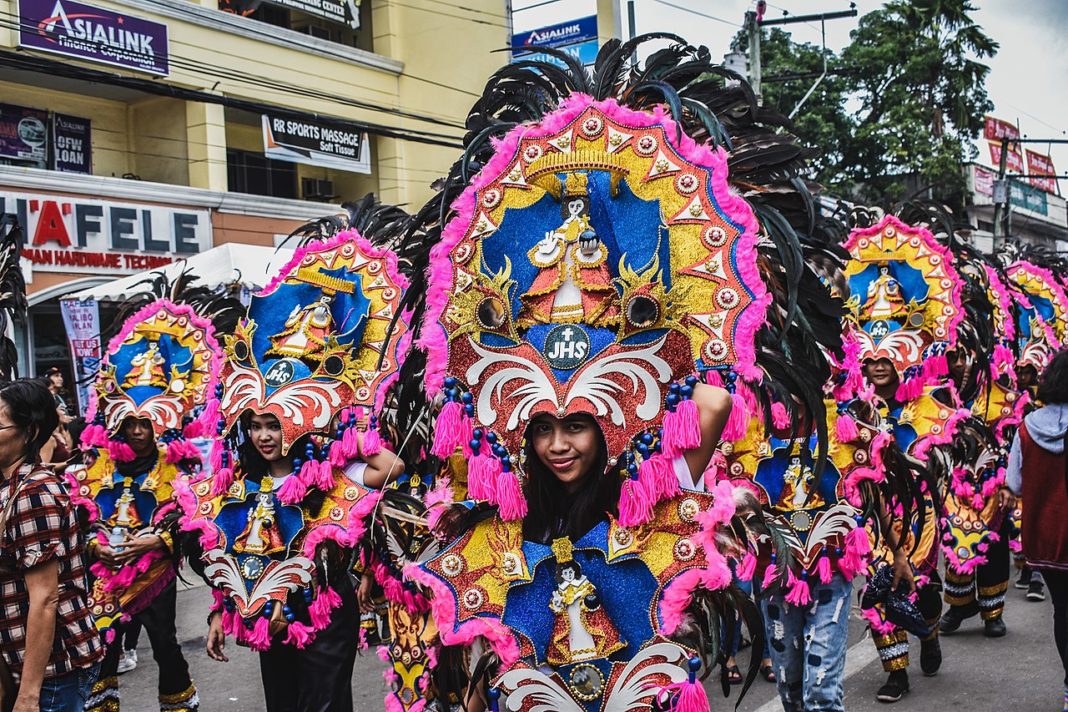The biggest celebration is held on the third Sunday of January in the town of Kalibo, province of Aklan, Panay Island.
 The original celebration was known as the Fiesta de Santo Niño, which dates back to at least the 17th century. It was part of the Catholic “fiesta system” employed by the Spanish colonial government to reinforce the reducciones policy that aimed to resettle natives in planned settlements built around a local church. The festival’s origins are also linked to the epic Maragtas, in which a group of 10 Malay chieftains called Datus, fleeing from the island of Borneo settled in the Philippines, and were granted settlement by the Ati people, the tribes of Panay Island. Datu Puti, Makatunaw’s chief minister made a trade with the natives and bought the plains for a golden salakot, brass basins, and bales of cloth. For the wife of the Ati chieftain, they gave a very long necklace. Feasting and festivities followed soon after.
The original celebration was known as the Fiesta de Santo Niño, which dates back to at least the 17th century. It was part of the Catholic “fiesta system” employed by the Spanish colonial government to reinforce the reducciones policy that aimed to resettle natives in planned settlements built around a local church. The festival’s origins are also linked to the epic Maragtas, in which a group of 10 Malay chieftains called Datus, fleeing from the island of Borneo settled in the Philippines, and were granted settlement by the Ati people, the tribes of Panay Island. Datu Puti, Makatunaw’s chief minister made a trade with the natives and bought the plains for a golden salakot, brass basins, and bales of cloth. For the wife of the Ati chieftain, they gave a very long necklace. Feasting and festivities followed soon after.
In 1972, the festival was renamed Ati-Atihan – which means “to imitate the Ati people”.
 The formal opening mass during the first day of the celebration emphasizes the festival’s religious event. The mass is followed by a procession accompanied by rhythmic drumbeats and dance parades along the street. The second day begins at dawn with a rosary procession and ends with a community mass and another dance parade. The highlight of the festival occurs on the last day, the third Sunday of January, when groups representing different tribes compete for tourists’ attention and prizes. The festival ends with a procession of thousands of people carrying different kinds of images of the Santo Niño.
The formal opening mass during the first day of the celebration emphasizes the festival’s religious event. The mass is followed by a procession accompanied by rhythmic drumbeats and dance parades along the street. The second day begins at dawn with a rosary procession and ends with a community mass and another dance parade. The highlight of the festival occurs on the last day, the third Sunday of January, when groups representing different tribes compete for tourists’ attention and prizes. The festival ends with a procession of thousands of people carrying different kinds of images of the Santo Niño.
Other towns in Aklan that celebrate the Ati-Atihan festival are Ibajay, Malinao, Makato, Batan, Altavas, and Malay (Boracay Island). Several nearby towns of Antique and Capiz also hold the Ati-Atihan festival.
According to Wikipedia, anamiaclasiete1.wordpress.com, thepinoywarrior.com














